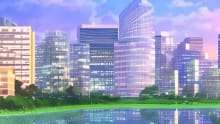Keeping employees motivated when working remotely is no mean task!

The ongoing pandemic has dramatically changed the meaning of ‘remote working’- away from the classical definition of being distant, far away to be the same irrespective of whether you ended up being 200 mts or 2000 kms away from your workplace. Most organizations have reworked their business continuity and risk management processes to become resilient, adaptable and agile.
Prior to the pandemic, VUCA (volatility, uncertainty, complexity and ambiguity) was a commonly used term to describe the complexity of the business environment. The disruptions due to the pandemic accentuated the importance of having to be even more prepared for uncertainties.
While remote working gives certain flexibility in terms of scheduling, savings in commute times and possibly better work-life balance, it also brings with it associated challenges like lack of space to work undisturbed, ergonomic discomfort, decreased social interactions, sub-optimal avenues for collaboration in addition to problems caused due to connectivity glitches. It is a relatively new way of working and every organization will have to figure out the set of initiatives that will help keep their folks constantly motivated and engaged.
The situations also pose multiple challenges for HR. While challenges like managing projects, tracking tasks and productivity can largely be addressed by leveraging technology and online tools that are available, the critical issues pertain to softer aspects like sustaining engagement levels, building emotional intelligence, empathy, inclusion, agility and bonding among the workforce.
Common challenges
To avoid micromanagement, leaders tend to give more flexibility which for some employees can result in a sense of a lack of direction. Similar is the case, in collaboration between teams and in cross-functional engagements, particularly when team members are in different time zones. In building and strengthening the trust between remote members, especially new-comers can take time. Also, the alignment to the company's ethics and vision especially in the case of new hires who may have come from culturally very different organizations doesn't happen easily.
Onboarding of new employees can also be less effective and they take longer to develop a sense of ownership and the feeling of belonging to an organization. Interestingly, the employees engage with each other purely on transactional interactions and at the cost of building a strong sense of bonding.
Driving Motivation
The context has also seen many of the key drivers of motivation getting reprioritised – ensuring necessary IT infrastructure and support to enable a seamless transition to WFH; extending employee assistance and counselling support, support towards medical assistance and care to employees and the community, trusting employees and giving autonomy to plan their work, sensitising team leaders to provide clear guidelines and targets, setting expectations and regular feedback for their teams; communicating and connecting by providing regular advisories, necessary information etc. as well as holding regular virtual team meetings, interspersed with celebrations and events to bond.
At the same time, it is also necessary to ensure constant focus on improving the skills and competencies of the teams to ensure that they are well prepared and capable to deal with the changing competitive landscape through multiple learning opportunities and platforms while also enabling them to personalize their learning journey and contextualize it to the work on hand as well as their own career aspiration. It is also important to coach and train managers to be able to effectively deal with remote teams and to also be able to be sensitive and understanding of constraints and issues they may face in contributing to their fullest potential.
Making Culture the glue
What determines culture? It is the value, beliefs, structures, professional traditions and leadership behaviours. Culture acts as the glue that binds the employees and guides their behaviours in the workplace. It is my observation that organisations with strong cultural values have not got impacted much by remote working. Rather, remote working has hastened the digitisation of processes, accelerated the adoption of digital solutions by workforce segments that have traditionally been laggard in this respect.
Despite remote working being suddenly thrust upon us, employees adopted it without a major impact on their productivity. Employees did go through the challenges of overworking, multitasking, lack of space /privacy at home, poor connectivity etc. but soon discovered their own ways to overcome them and continue to become valued contributors keeping the motivational and productivity levels high.
Thus, it is important for HR leaders to ensure the culture goes from strength to strength and the employees feel they represent the organisations’ values. Motivating and encouraging them should be an ongoing process and they should be appreciated for the contribution they bring to the organisation’s success. The pandemic has taught us many lessons, one of them being the importance of the most critical asset any organisation has – its employees. It is up to the leaders to foster an environment for their employees that is inclusive and encouraging.
Building resilience
Companies with a culture of open, transparent communication, and trusting relationships have faced the pandemic with ease. Their leaders actively demonstrated behaviours that built confidence among employees and deployed technology to make up for the absence of ‘in-office’ and ‘in-person’ interactions.
Today, work hierarchies are getting redefined as the workforce profile becomes increasingly multigenerational. HR needs to be constantly innovating to raise the bar on employee experiences and putting in efforts to align the HR processes to keep them contemporary and drive employer value proposition as well as shape the culture required to make the organization pursue the path of excellence.
Conclusion
An employee’s experience in a particular organisation is an accumulation of every event during their time there. It mainly comprises of the Company’s culture, its physical environment, and the work place technology it has adopted. What influences the most is the culture it drives across levels and how do employees perceive the organisation. While the environment and technology evolve over time, employees bond over the culture and values that runs through the organisation.
















